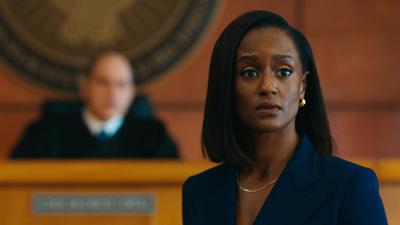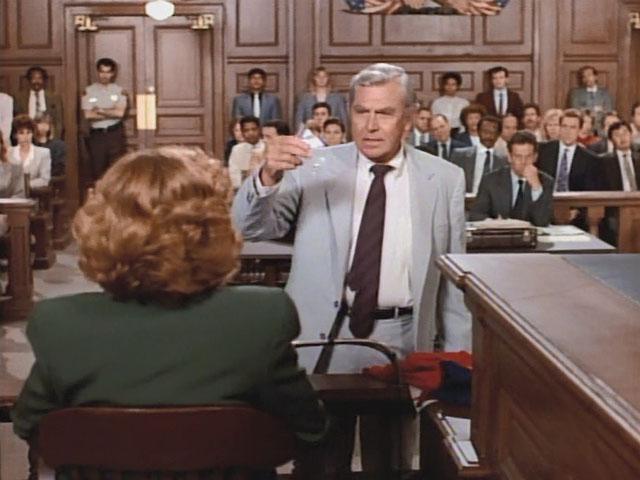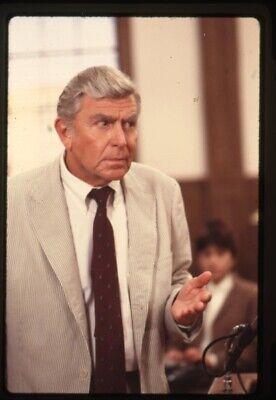In the world of television, few characters have left as indelible a mark on the courtroom drama genre as Ben Matlock, the folksy yet brilliant defense attorney portrayed by Andy Griffith. “Matlock,” with its blend of Southern charm and razor-sharp legal acumen, captivated audiences for nearly a decade. But beyond the gripping narratives and memorable performances, there’s a fascinating story behind how the show’s iconic courtroom scenes were brought to life. Journey with us behind the gavel as we explore the meticulous craftsmanship, the creative ingenuity, and the warm camaraderie that transformed ordinary sets into the bustling halls of justice. Discover how the magic of television turned legal battles into captivating drama, and learn about the unsung heroes whose work behind the scenes made “Matlock” a timeless classic.
Behind the Gavel Crafting Authentic Courtroom Drama
In the world of television, where authenticity often takes a backseat to drama, the courtroom scenes in “Matlock” stood out for their meticulous attention to detail. The creators of the show went to great lengths to ensure that each scene was as true to life as possible, while still maintaining the dramatic flair that kept viewers on the edge of their seats. Real courtrooms were meticulously recreated on sound stages, with every element, from the judge’s bench to the jury box, crafted to reflect the solemnity and gravity of actual legal proceedings.
To achieve this level of authenticity, the production team employed a variety of techniques. Some of these included:
- Consulting with legal experts to ensure that courtroom procedures and legal jargon were accurately portrayed.
- Using professional actors with legal backgrounds to play key roles, adding a layer of credibility to the performances.
- Incorporating real-life legal cases as inspiration for the show’s storylines, grounding the drama in reality.
Moreover, the filming process was designed to capture the tension and emotion of a real trial. Close-up shots were used to highlight the intensity of cross-examinations, while wide-angle views conveyed the courtroom’s imposing atmosphere. These techniques, combined with the show’s commitment to authenticity, made “Matlock” a standout in the genre of legal dramas, captivating audiences with its blend of realism and storytelling.

Lights, Camera, Justice Capturing the Essence of Legal Battles
The beloved TV show “Matlock” captivated audiences not just with its compelling storytelling, but also with its realistic portrayal of courtroom drama. Filming these intense scenes required a meticulous approach to ensure authenticity and engagement. The production team employed a variety of techniques to bring the legal battles to life on screen.
Attention to Detail: The set designers meticulously recreated courtroom settings, down to the smallest details. This included everything from the wood paneling and gavel to the seating arrangements and jury box. The goal was to make viewers feel as though they were sitting in a real courtroom, witnessing the drama unfold firsthand.
- Lighting Techniques: To capture the essence of tension and focus, strategic lighting was employed. Soft, focused lighting highlighted the actors’ expressions, while shadows added depth and drama to the scenes.
- Camera Angles: Dynamic camera angles were crucial in creating an immersive experience. Close-ups captured the emotional intensity of the characters, while wide shots provided a comprehensive view of the courtroom dynamics.
- Sound Design: The sound of a gavel striking, the murmur of the courtroom, and the crisp dialogue were all carefully engineered to enhance the realism of the scenes.
By combining these elements, “Matlock” was able to deliver courtroom scenes that were not only believable but also deeply engaging, leaving viewers eagerly anticipating each new twist and turn in the legal battles portrayed.

From Script to Verdict A Deep Dive into Matlocks Filming Techniques
In the world of television, crafting a courtroom drama that feels authentic yet engaging is no small feat. The beloved series “Matlock” managed to capture this balance beautifully, thanks to its innovative filming techniques. The show’s creators were meticulous in their approach, ensuring that every scene unfolded with the right mix of tension and drama.
The courtroom scenes were brought to life using a combination of strategic camera angles and lighting. Low-angle shots were often employed to emphasize the authority of the judge and the gravity of the proceedings. This technique helped to create a sense of intimacy, drawing viewers into the drama as if they were part of the jury themselves. Soft lighting was used to highlight the characters’ expressions, adding depth to their performances and allowing subtle emotions to shine through.
- Set Design: The courtroom set was meticulously crafted to reflect the grandeur and solemnity of real-life courtrooms, with rich wood paneling and imposing judge’s benches.
- Sound Design: The subtle use of ambient sound, like the shuffle of papers or the murmur of the audience, added layers of realism to each scene.
- Editing Techniques: Quick cuts during heated exchanges and slow, deliberate pans during monologues helped to maintain the pacing and intensity of the narrative.
By paying attention to these details, “Matlock” not only entertained but also educated its audience on the nuances of legal proceedings. The show remains a testament to how thoughtful production techniques can elevate storytelling, turning a simple courtroom drama into a captivating experience.

Creating Conviction Tips for Filming Compelling Courtroom Scenes
When it comes to filming courtroom scenes that captivate audiences, there are a few key elements that can make all the difference. Lighting plays a crucial role in setting the tone and mood of the scene. Soft, diffused lighting can create an atmosphere of tension and intrigue, while harsher lighting might highlight the drama of a heated exchange. Pay attention to the placement of lights to ensure that every expression and gesture is captured with clarity.
Camera angles are another vital component. Using a variety of shots, from close-ups to wide angles, can help convey the gravity of the situation and the emotional states of the characters. Consider the use of low-angle shots to emphasize authority or high-angle shots to create a sense of vulnerability. The strategic use of over-the-shoulder shots can also immerse the audience in the dialogue, making them feel like a part of the jury.
- Sound Design: Ensure that the dialogue is crisp and clear, as it’s the backbone of any courtroom drama.
- Set Design: Pay attention to details such as the judge’s bench, jury box, and gallery to create an authentic setting.
- Costuming: Wardrobe choices should reflect the characters’ roles and personalities, enhancing their believability.
directing actors to deliver performances that are both believable and compelling is essential. Encourage them to delve into their characters’ motivations and emotions, allowing for genuine interactions that resonate with viewers. With these tips in mind, your courtroom scenes will not only be convincing but also memorable.


